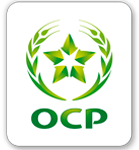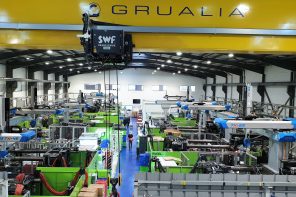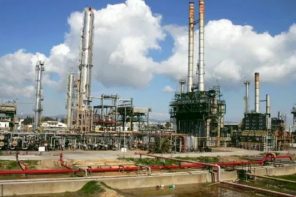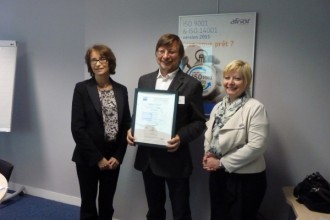
© OCP S.A./DR
Moroccan industry giant OCP has asked GUTcert, a subsidiary of AFNOR Group, to verify calculation of its carbon footprint, based on ISO 14064-1. A useful exercise in terms of controlling its CO2 emissions… in this COP22 host country.
Since 2008, this Moroccan group specializing in phosphates has implemented an ambitious development programme aiming to double its mine production capacity and triple its processing capacity by 2028. So raising the economic performance of this heavyweight in the Moroccan economy. But is this agenda compatible with the requirement for carbon footprint management, as firmly restated in 2016 at COP22 in Marrakech?
To answer this question, OCP has meticulously calculated its greenhouse gas emissions (GHG). And it wanted this exercise to be verified by an expert third party, in this case GUTcert . AFNOR Group’s German subsidiary therefore carried out an audit which resulted in a positive outcome with issue of a certificate attesting to the fact that the carbon footprint had indeed been correctly calculated as per the method recommended by ISO 14064-1, the authoritative international voluntary standard on this subject. Interestingly, this standard is currently under revision, to perfect the methodology.
NF EN ISO 14064-1, a method supported by consensus
“As a good starting point, an initial carbon footprint had been calculated for 2007,” explains Kamal El Omari, project manager in OCP Group’s Environment department. “The geographic scope covered our Khouribga and Gantour mine sites, the Jorf Lasfar and Safi industrial platforms, the Phosboucraâ subsidiary and OCP’s head office in Casablanca. From then on, each year we quantified our GHG using the same method, taking account of each of the ‘scopes’ detailed in the standard.” The scopes in question are 1, 2 and 3, namely direct emissions, indirect emissions and other indirect emissions.
In 2015, a further step was taken: OCP appointed GUTcert to verify its estimated carbon footprint in order to enhance its credibility and transparency. That year, the first measures in the modernization strategy were starting to bear fruit: increased use of renewable energies (wind power in particular), improved energy efficiency (adoption of cogeneration), and above all, start of operation of the Slurry Pipeline. This underground pipeline, 235 kilometres in length and with an overall elevation difference of 800 metres, links the Khouribga mines to the processing site in the port of Jorf Lasfar. Phosphate is transported via a gravity-flow system over most of its journey through the pipeline. And as an added improvement, in the form of pulp (a mixture of water and mineral), whereas rail transport – the former prevailing mode of transport – had necessitated a prior drying operation that proved very energy intensive. “According to our calculations,” adds Kamal El Omari, “the pipeline should ultimately allow us to save 930,000 tonnes of CO2 each year. But we still needed to be certain that all our calculations this far have been reliable.” Hence the intervention by GUTcert .
The third party verifier: reliability and objectivity
A few months later, the verdict was revealed: GUTcert validated the exercise. Calculation of OCP’s carbon footprint in 2014 did indeed comply with the standard’s internationally established method, at least in its 2012 version which is still applicable today in 2017, pending the revised text. The greenhouse gas emissions observed in OCP’s designated geographic scope in that year were very precisely 3,123,590 tonnes equivalent CO2, compared with 2.99 million in 2007. So, an increase, but nevertheless significantly lower levels than would have been expected given the development of the activity. The efforts paid off!
And for OCP, using the services of a third party verifier means they can publicly declare this with more credibility and objectivity. “GUTcert’s expertise confirms the soundness of our calculations, particularly on scope 3 [editor’s note: the hardest to evaluate] and has helped us reduce our margin of uncertainty,” adds Kamal El Omari. “Previously, for example, transport of subcontractors who came to work on our sites was not taken into consideration. GUTcert also helped us improve the inventory procedures for GHG applied on each of our sites.”
Tomorrow, footprint by product
Currently, GUTcert is repeating the exercise for the 2015 and 2016 balance sheets. “This carbon footprint monitoring enables us to identify the main sources of our greenhouse gas emissions, and then to work out the means to reduce them as far as possible,” explains Kamal El Omari . In 2017, 70% of the Group’s electricity needs will be met by wind power and cogeneration, a figure that will rise to 95% in 2020 and which is already the case in our Phosboucraâ site.” Now OCP is looking to determine their carbon footprint per product. “Footprint per product is a strong indicator to help us measure the impact of each of our projects, along the entire value chain”, concludes Kamal El Omari.

Activity: extraction, production and marketing of phosphates, phosphoric acid and phosphate fertilizers
Revenue: 3.8 billion euros in 2016 (42.5 billion dirhams)
20,700 employees (2015)
Establishments: 3 mine sites and 2 chemical complexes
Find out more about the ISO 14064-1 audit conducted by GUTcert (in German or English)…




